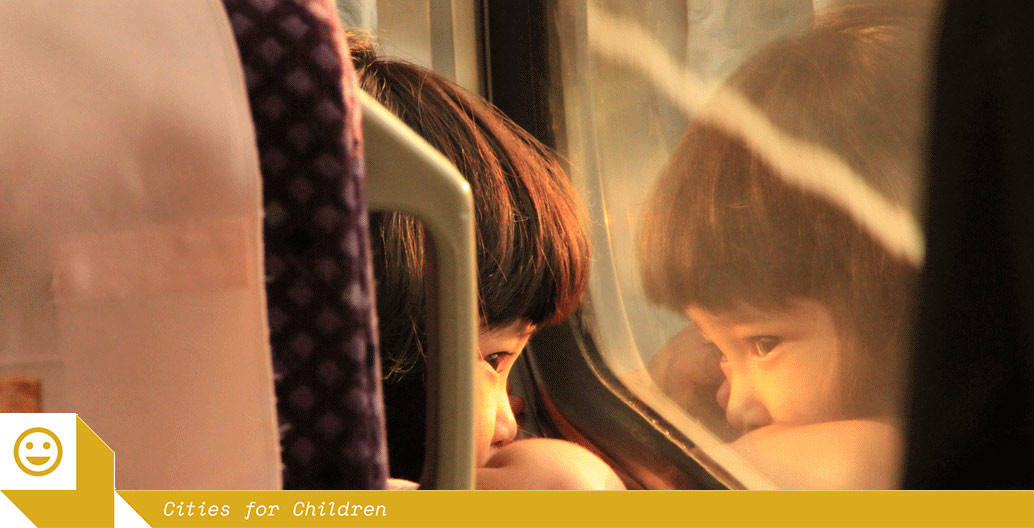
Designing for children: Beyond the playground
If children were given the ability to design the cities they inherit as adults, what would they look like? In this exclusive edited extract from ‘Designing cities with children and young people’, co-editors Kate Bishop and Linda Corkery propose an alternative vision for city planners.
The challenges of designing and planning the 21st century city are shared by nations all around the world. Increasing urbanisation and densification in global cities raise social, economic, and environmental pressures on the people that live in them now, and this is likely to only increase for future populations. Children and young people, from birth to 18 years of age, represent a vulnerable and marginalised segment of the urban population, susceptible to having their needs and considerations overlooked by prevailing adult agendas and priorities. What might cities look like in 50 years if children and young people of today were active participants in imagining the built environments of their future?
This book draws attention to some of the gaps and limitations in the way society considers children and young people as fellow citizens. We believe these breaches undermine our capacities as urban design and planning professionals to deliver optimal environmental opportunities for this age group. The sorts of problems and solutions cross many professional boundaries, so this book is presented as an interdisciplinary discussion to address the spatial, environmental and social challenges that children face in cities today.
In Designing Cities with Children and Young People, we seek to build bridges and understanding between the different professions involved in the creation of the built environment, and to provide a resource for policy makers, urban planners, and design professionals. As the sub-title of the book emphasises – Beyond Playgrounds and Skate Parks – we want to highlight the fact that there are many other settings that play significant roles in the everyday lives of children and young people.
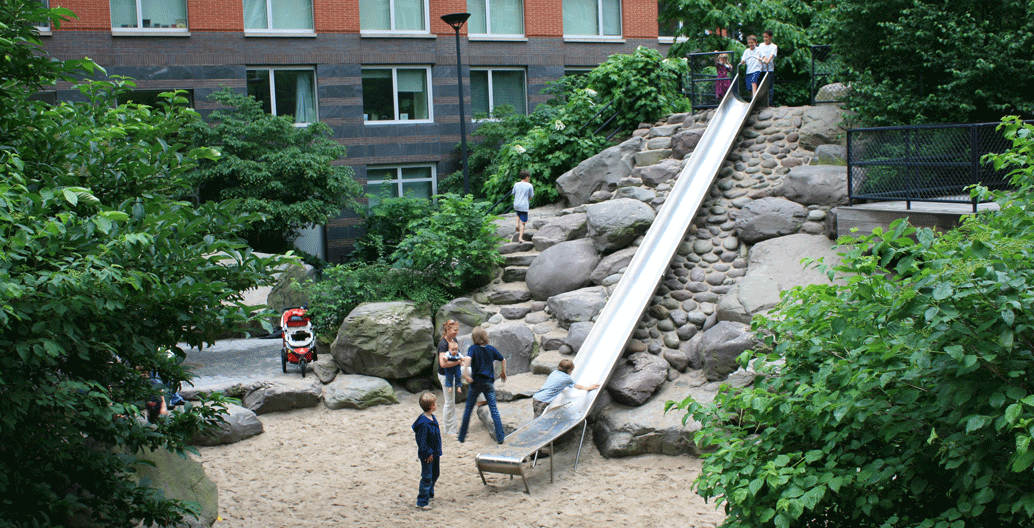
Teardrop Park Playground, New York. Image: Linda Corkery.
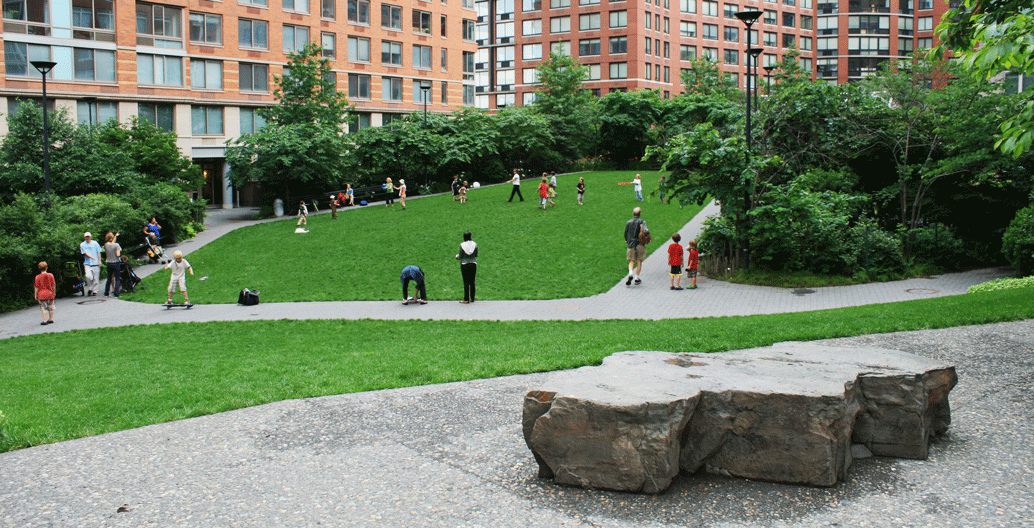
Teardrop Park Playground, New York. Image: Linda Corkery.
What we know.
Change and improvements to childhood participation in urban planning has been happening at a glacial pace. Why is this? The political and social contexts surrounding children’s participation in the design and planning of cities, reveal some unique and some commonly-held attitudes that influence children’s environmental outcomes. For example, there is a decreasing proportion of children in some urban populations brought about by falling birthrates in some countries. In research findings and media reporting, there is evidence of resentment from people who do not have children. A typical economic argument is: why should people without children have to pay subsidies, through their taxes, for childcare and education of other people’s children? This, coupled with the ageing populations in many countries, threatens children’s social acknowledgement. It is not unrealistic to suggest that the interests of children and young people will face an increasingly difficult task to remain on political, social and environmental agendas. Interpreting the ‘specialness’ of children and childhood across all social domains will require increasing diligence from adults in positions of power as there are fewer children to make the case evident for themselves.
In research findings carried out over the past two decades, there is growing acknowledgment that children’s interactions and relationships with the built environment are changing. The conclusions point to two sets of drivers: changes in social attitudes about children and childhood; and changes in environmental opportunity and experience. These two realities, coupled with children’s continued lack of opportunity to participate in community development processes, mean that children are literally losing ground in all urban contexts in the developed world.
Research from the health sector confirms that children are leading more sedentary lives than any generation before them. Childhood is increasingly spent indoors in private spaces, which fundamentally changes children’s relationship with their neighbours and their neighbourhoods. Through the research of child and youth studies across several disciplines, it is clear that these changes in environmental experience are partly the result of increasingly risk averse western societies, which is reflected in risk averse approaches to parenting. Broader social attitudes also reveal that communities frequently have a polarised view of their young people as either ‘angels’ or ‘devils’, and this also greatly impacts the way they are regarded, and included in the community and in community development projects—or not.
In their discussion of children’s participation in policy decision-making more than a decade ago, Kay Tisdall and John Davis made the point that participatory processes are often only used on a single or one-off project basis. This inhibits the potential effectiveness of the outcomes to change embedded processes and well-structured prevailing networks because children’s presence is transient, as is the group of people championing them. They argued that in the case of ‘policy communities’, these usually have a tight membership and ideology and established systems of players and negotiation whereas ‘issue networks’ have more members and less established power networks and systems, thus “policy communities are more likely to influence policy than are issue networks”. This kind of challenge has not changed and still faces all those who engage in participatory processes in research, policy and practice. While research in this area is pertinent to those working in child-sensitive design and planning, we believe the issues discussed in this book are relevant to cities and people around the world.
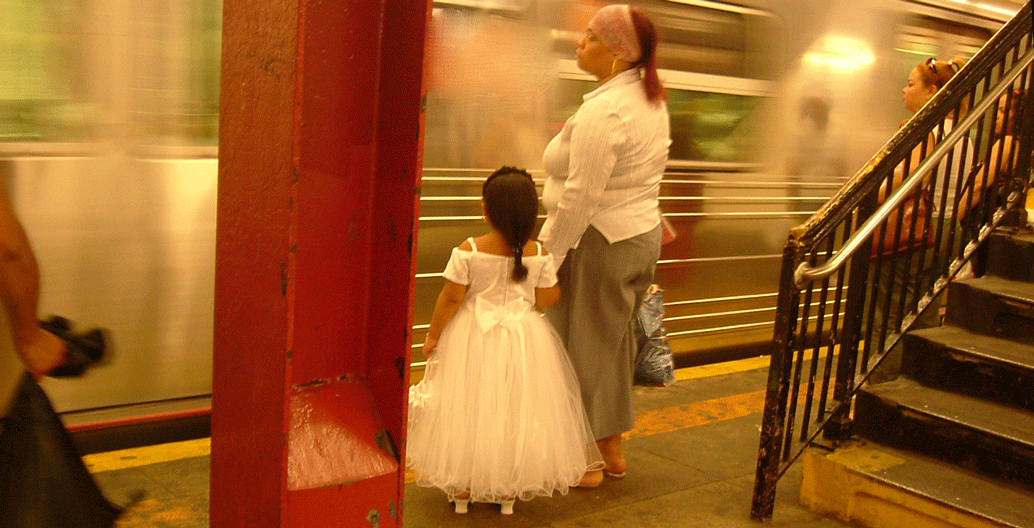
How do city planners conceive of accessibility from a child's perspective?
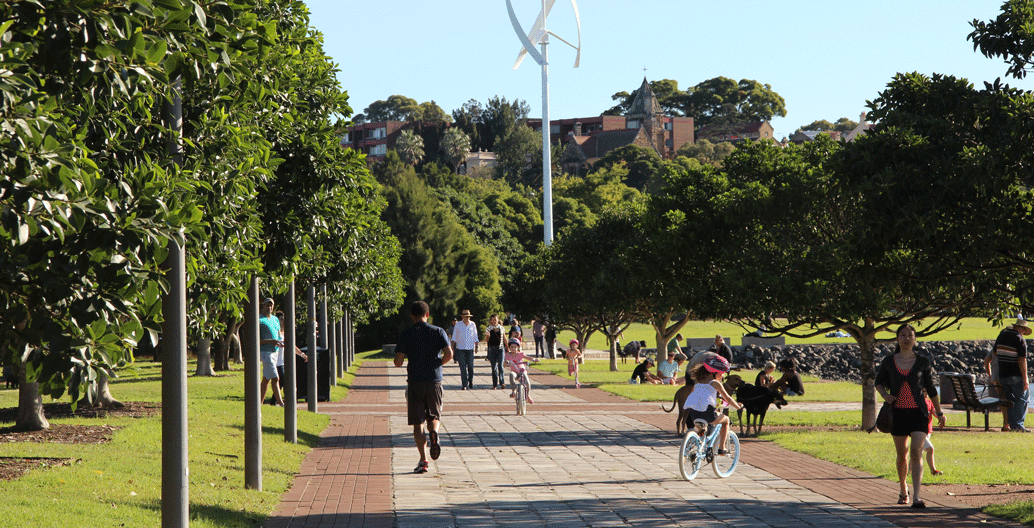
Sydney's Glebe foreshore.
How things could change.
We want to see good built environments become an everyday reality for children and young people and this is down to the quality of the processes that commission, create and construct them. We want to highlight client initiatives and innovative processes and examine the barriers that arise: what works, what does not. Above all, we are advocating for more inclusive urban design and planning – that is, processes that invite and take account of children’s and young people’s participation. With more of this, we believe we can get to a point where the processes that produce the built environment are so sound that a good outcome for everyone is more likely to be achieved.
When talking about ‘process’, we mean all levels of process including: thinking about children and young people, establishing who they are, and what they need in a specific contemporary context; planning with them and for them to meet their social and environmental needs; and collaborating in design, and sometimes construction, in both general public and child-centered settings. As built environment professionals understand, there are many potential points of breakdown in the journey from project conception to project implementation that can compromise the final result for children and young people. For example, there may be a fear or disinterest of participatory processes, or the view that it takes too much time, thus preventing these stakeholders from taking part in any aspect of the project. Other problems may include: poor communication between professionals; a lack of shared understanding; a lack of the specific and relevant knowledge about children and childhood that would ensure good decision making on their behalf.
In those countries that have adopted the child-friendly/participation agenda of the United Nations Convention on the Rights of the Child (1989), how embedded in planning and design processes are these agendas? If they are not embedded, why not? What inhibits their progress? More than a simple spot check, our book aims to reflect the practice and progress of organisations and individuals who have embraced these philosophies and approaches, and have been practicing them for years. We want to bring to light how these practices have evolved and what has been learned along the way and to see how they have advanced.
Defining childhood and public space in the 21st-century.
Public space is also consistently shared with adults and it can be a contested and politically charged arena where community values are on display in relation to many issues, including the community’s response to young people. Children and adults are involved in a constant process of spatial negotiation in cities which often results in a mismatch between what adults want and what children and young people want in relation to public space. Studying shared public spaces allows a greater opportunity to explore the dynamics of adult-child relations in planning and design processes than when the attention is on child-only environments. Focusing on children alone will not help to bring about changes in adult-led processes such as planning and design. As Tom Cockburn argues, “in order to bring this forward, attention must be paid to issues of engagement, co-construction and partnership”.
Child-centred research is essential for understanding children’s lived experience. It provides perspectives that adults do not have and cannot do without if they are trying to meet children’s needs—of any kind. However, to alter adult led processes, there must also be a focus on not only hearing children’s voices but also on positioning them within adult discourse, values, and operations. It has long been argued that children’s participation must be ‘institutionalised’, that is, to become ‘business as usual’ in all aspects of civic life. However, that still remains a rare thing.
One of the persistent themes to emerge from research in this area is the difficulty in managing knowledge transfer between different professions or the different sectors of research, policy and practice. Researchers also identify a kind of ‘deafness’ to children’s voices as a recurring theme; a lack of receptivity to children’s input. These themes are also part of the struggle with spatial provision for children and young people in our cities and communities. For example are they going to get a skate park or a playground or not? In research these themes are often framed as either a reflection of, or an expression of child/adult power relations in any community.
Why participation matters.
Children’s participation is often championed as an indicator of positive child-adult relations: an acknowledgment of children’s capacities; an expression of their rights; an opportunity for citizenship training; an empowering experience for children. Likewise for adults the claims are that the adult world will be better off if it would understand and meet the needs of its children; and that adults will be enlightened by the process and the outcomes of children’s involvement. However, in reality, the proponents of participation are rarely in a position to evaluate the enduring outcomes of experiencing participatory processes or projects in either the children’s or the adults’ lives. There is very little research evidence that looks at how the experience of one of these processes or projects continues on, in either the expectations and interests of the children involved, or in the professional practices or policies of the adults involved.
Although participatory processes can be very successful in one-off projects, bringing about cultural change in organisations or institutions of power in our societies remains difficult, despite the countless models for success in evidence. Growing Up Boulder for example, running since 2010, has achieved an enduring and unique status, well entrenched in the local community building processes. This long running project provides a substantial model of best practice for other communities to follow.
The discussion around children’s participation also intersects with other major global movements and agendas such as social inclusion and social sustainability. Participation has long been considered a process that is fundamental to social inclusion, with the editors of Volume 18 Children and Society arguing, “multidimensional participation must be part of the processes and part of the answer for social inclusion as a dynamic concept emphasizing society’s barriers rather than individual’s failings”.
The collective resources of this book provide a contemporary discussion and reflection on persistent challenges and key processes within the design and planning of urban environments for children and youth. They also offer effective approaches for future practice recommended from experienced points of view that we hope all readers will find beneficial.
––
Dr Kate Bishop is a senior lecturer at UNSW’s Landscape Architecture Program. Currently the director of the Built Environment Interdisciplinary Learning (BEIL) program, her principal area of design and research interests is in children, youth and environments.
Associate Professor Linda Corkery joined UNSW’s Built Environment Faculty in 1999 as Head of Program, Landscape Architecture having previously practiced in the United States, Hong Kong and Australia as a planner and landscape architect. She is a Fellow of the Australian Institute of Landscape Architects, currently serving as National President.
Published by Routledge, Designing Cities with Children and Young People is out now and available online.


